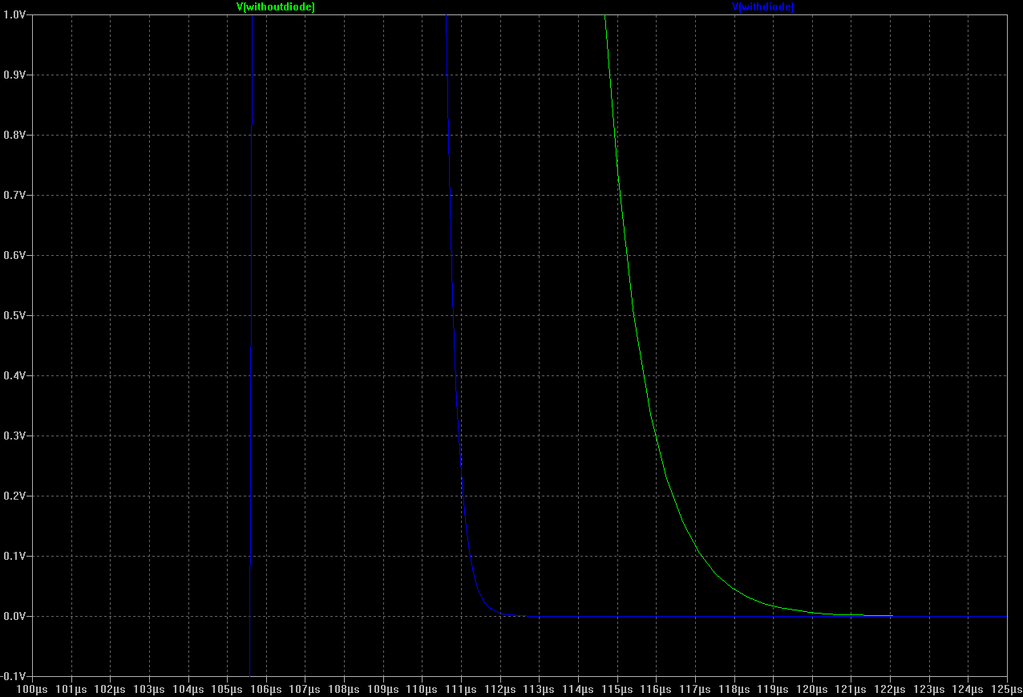Diode on Drain
On the breadboard I got a significant reduction on the delay when using the diode.
Then I connected the scope probe to the drain and found that the transient voltage gets stuck between the mosfet and the diode, so I added a 56k resistor to drain that voltage to ground.
So Carl is right in that the mosfet sees the same flyback voltage, however, the diode is then biased such that the drain capacitance can not go to the coil anymore.
Tinkerer
Originally posted by hobbes_lives
View Post
Then I connected the scope probe to the drain and found that the transient voltage gets stuck between the mosfet and the diode, so I added a 56k resistor to drain that voltage to ground.
So Carl is right in that the mosfet sees the same flyback voltage, however, the diode is then biased such that the drain capacitance can not go to the coil anymore.
Tinkerer




Comment